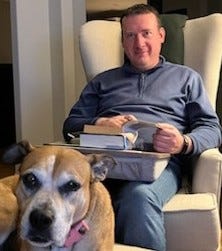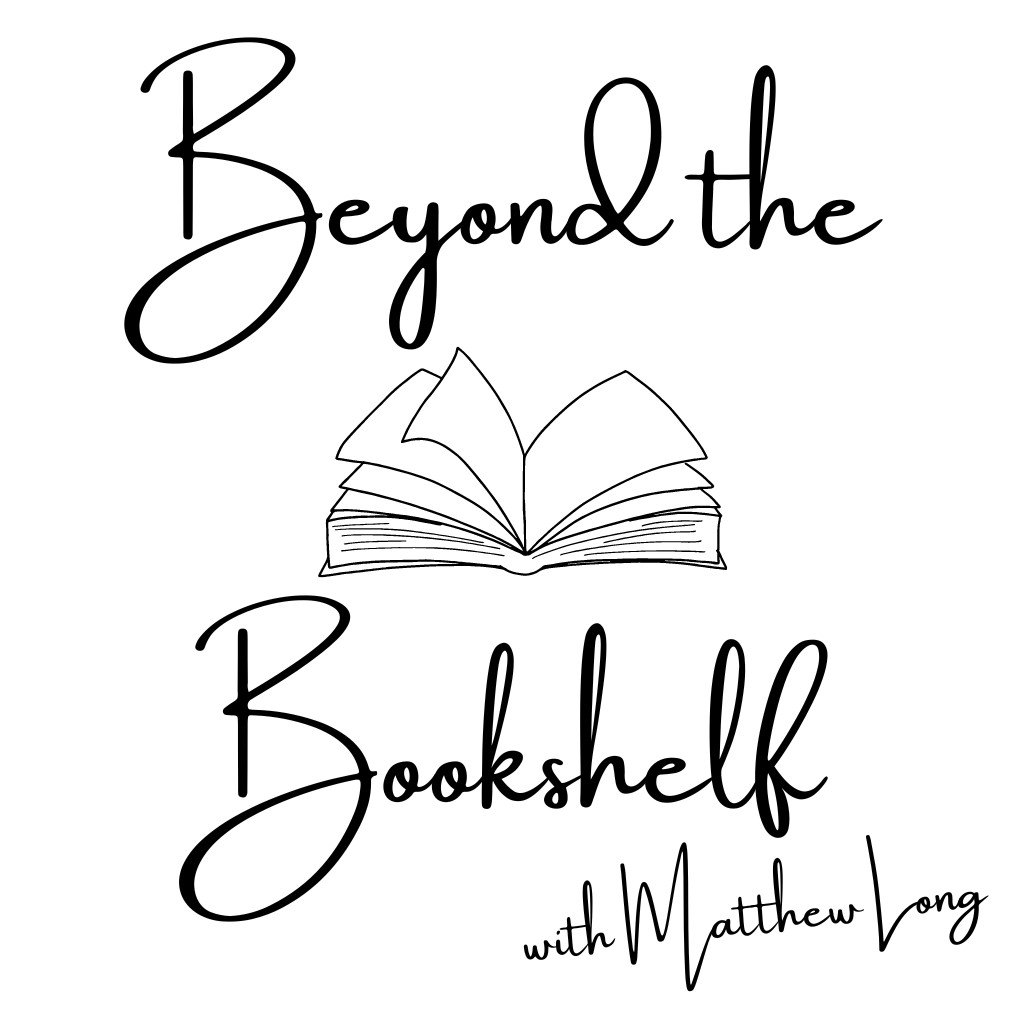Behind the Substack with Matthew Long
Read the full interview with the author of Beyond the Bookshelf with Matthew Long
Welcome to the edition of Behind the Substack. Today,
from Beyond the Bookshelf with Matthew Long shares his approach to creativity, growing his readership, staying organised, favourite books, and self-care habits. If you enjoy this series, please let me know by leaving like, comment or subscribe for more conversations like this.1. What’s your favourite coffee?
I prefer dark roast coffee with just a little sugar. I usually drink 2-3 cups per day. Maybe once or twice a year, I will have a hazelnut latte or a mocha, but those are few. I am a simple man with simple pleasures.
2. Can you tell me about the moment you decided to start writing? Where were you, and what inspired you?
Writing has been a part of my life for a long time, so I don’t recall the exact moment when the practice first came into my life. I wrote poetry and stories all throughout my childhood and into high school but took a break for many years while I was pursuing my career and raising a family. In the fall of 2023, Simon Haisell shared with his Instagram book club he was moving to Substack. I did not know what Substack was, so I checked it out. That same day I created my publication. I think the original name was “The Books of My Life” which was ok if I was doing a personal blog but it became more than that with time.
3. How has using Substack changed or influenced your writing style or topics?
Now I mostly write essays. Occasionally I write book reviews or interview a writer. Everything of my own I have published on Beyond the Bookshelf is non-fiction. I have shared poetry from other writers, and I will share some short stories in the future, but my writing is non-fiction. I feel comfortable in this realm of discussion, and I have attempted to shape my publication in a way that feels like a conversation. I am unsure if I am successful at that or not, but it is my goal. I hope to understand how literature shapes our lives and vice versa. So when I read, I look for those intimate connections with real life. Those are the things I try to share when I write for my readers.
4. What strategies or efforts have been the most successful in growing your readership on Substack?
I have no evidence to back this up, so everything I am telling you is conjecture. What I think worked for me was publishing every week, being my authentic self, and caring about my audience. When you publish every week, or twice a week like I do now, you can’t focus on perfection. My essays have spelling errors and grammatical mistakes. I focus on being myself. I love reading, I love living life to the fullest, and I love finding how those things connect. So that is what I share week in and week out. I also try really hard to respond to every comment on my articles and every comment on my Notes. It is time-consuming and I know I miss some of them, but it is important for me because the community is where the good stuff comes from. If it was only about me I could write all my thoughts in a journal at home. I am interested in whether other people see the same connections I do or if they see something different. That is where the conversation begins. Over the first year, I experienced steady growth. On my first anniversary, I think I had around 1,500 subscribers or something close to that. In November, a very simple Note of mine went viral. I write on Notes daily, and it is almost always connected to reading or my dog, Lola. I am not sure why this note took off. Within a couple of weeks, I had over 5,000 subscribers.
5. Can you share an example of something you tried that worked better than expected?
You won’t find paywalls on my publication. This is a personal decision that every writer has to make. I knew I wanted to make some money writing because this is really my full-time job now that I retired from the Navy. However, I grew up in a large family that had little money. I respect the fact that finances can be a discriminator. It was important to me that my writing be available to everyone, regardless of their financial situation. So I chose no paywalls, knowing that this might lead to making less money. That was a creative and personal decision I made. I am thrilled with my decision. I would love to make more money, but the community that has built up around my publication is so rewarding. I have built relationships with readers and made genuine friendships. You can’t put a price on that. And the paid subscriptions have come a bit at a time. I will continue to trust the process and hope that readers who have financial means will also find value in my publication and desire to support me.
6. Since you’ve started your publication, what do you consider your biggest learning so far?
None of this is a competition. There are so many talented people out there. The levels of success will differ, but the important factor is we are sharing our authentic selves. I consider myself a champion of every person's inherent value. I am going to cheer on every little success you have because you aren’t in competition with me. We are in this together.
7. Can you walk us through how you plan and organise your content for your Substack publication?
I am a planner, so I geek out on this a bit. I have two sections for my publication. The regular Beyond the Bookshelf essays come out on Tuesdays. I have a big spreadsheet where I plan out the topics week by week. So, I have everything more or less planned out a year in advance. For 2025, each month has a topical theme and a book selection. Then each week has a different focus whether that is a book review, personal essay, guest essay, etc… The Deep Reads Book Club essays come out on Fridays. In 2025 we are reading Homer’s The Iliad and The Odyssey. One chapter per week.
8. What tools or methods do you use to stay on top of your writing schedule?
I live by my spreadsheet. I tried a few other methods but the spreadsheet is printed out and sitting on my desk. It stares at me. It guilts me into submission.
9. On average, how much time do you spend working on your Substack each day or week?
A lot. I haven’t actually tracked this, but I would guess close to 30 hours a week. I spend an hour each morning answering comments or messages and responding to emails. I also give myself a little of time to read articles in my inbox from other writers, but often I save longer articles for the weekend.
Once I finish that morning's maintenance, I turn off the computer, silence my phone, and spend some time reading, at least a couple hours each morning. My publication is all about books, so reading is a part of the job. I take a lot of notes.
I take a break in the middle of the day to run errands, do household chores, and have lunch. I frequently take a quick nap in the afternoon as well which is just what I need to be refreshed for writing.
I write everything in longhand for the first and second drafts. Once I have something I am somewhat happy with, I type it up in a Google Doc and do some more edits and research for photos, music, artwork, etc.… that might relate to the topic.
This whole process is done for two weekly essays. I also spend a bit of time reading what others have written, sharing work that I appreciate, commenting on other articles, etc…
As of this morning, I figured I was making about $2 per hour. No one becomes a writer to get rich, but I love it.
10. How do you juggle your Substack with other commitments in your life?
I am at a fortunate time in my life where I have the flexibility to devote myself to this endeavor. My wife works full-time, my kids are older and need less hands on attention. But I try to prioritize the family stuff. Taking care of the house, preparing meals, running errands, etc… That is one reason I plan so far ahead on my publications. I am usually about a month or two ahead on essays and I do that on purpose so that if something unexpected happens I have flexibility in my schedule.


11. How do you care for yourself?
I listen to good jazz, take long walks with my dog, and extend a lot of grace to myself and others. Life is too short to live pissed off. You can read my article, In the Heart of the Void, to understand how my life was controlled by anger for far too long. I am 47, so it is likely I am at or past midlife. I want the second season of my life to be filled with harmony and happiness. Fortunately, I can control those things.
12. What’s a book you’ve read recently that had a big impact on you?
I chose The Requisitions by Samuel Lopez-Barrantes as my Book of the Year for 2024. I have written about it and made a video about it if people are interested in seeing those. It is metafiction so it is a story within a story and the narrator is a character. The writing style gets to the heart of what I love about literature, the intimacy between the reader and the story. I met Samuel through Substack and we have become friends but I loved his book before knew him. I have bought 20 copies of the book on my desk and have been giving them away as gifts. Most of my profits from writing on Substack went back into buying this book! But I believe in supporting indie writers and this book is a beautiful work of art. Go read it.
13. Where are you finding joy when things don’t go to plan?
Most days things don’t go to plan! But that is ok because my plan is usually silly. I find joy in a cup of coffee, jazz playing in the background, Lola sleeping at my feet. I like to sit on the back porch and watch the birds when the weather is nice. When the family is home we play board games. We usually hold a game tournament each year which is a great tradition. I am learning to be spontaneous and just appreciate the serendipity of life.
14. What are you working on right now?
My main project at the moment is reading The Iliad and preparing all the weekly essays for that. It is a lot of work. I want to do it right and I am enjoying it but it is a significant amount of work. I hope my readers enjoy the end result.
Thank you so much, , for sharing your experiences with us! What are two things that stood out to you or that you’re taking away from this interview?
If you enjoyed the interview with Matthew, you might also enjoy this one with Lucy:








Thanks Jana! I had a great time answering these questions. I appreciate the opportunity.
This was a great interview and I agree with the paywall thing. I tried it for a little while but I noted how I feel when I get a Substack I subscribed to in my inbox and either the entire thing is paywalled (so why did I become a free subscriber?) or the best parts of an essay are behind a paywall. It's a negative emotion. so I took my paywall down as well. I write because I love to write. I really appreciate how much time and care you put into your Substack, Matthew!